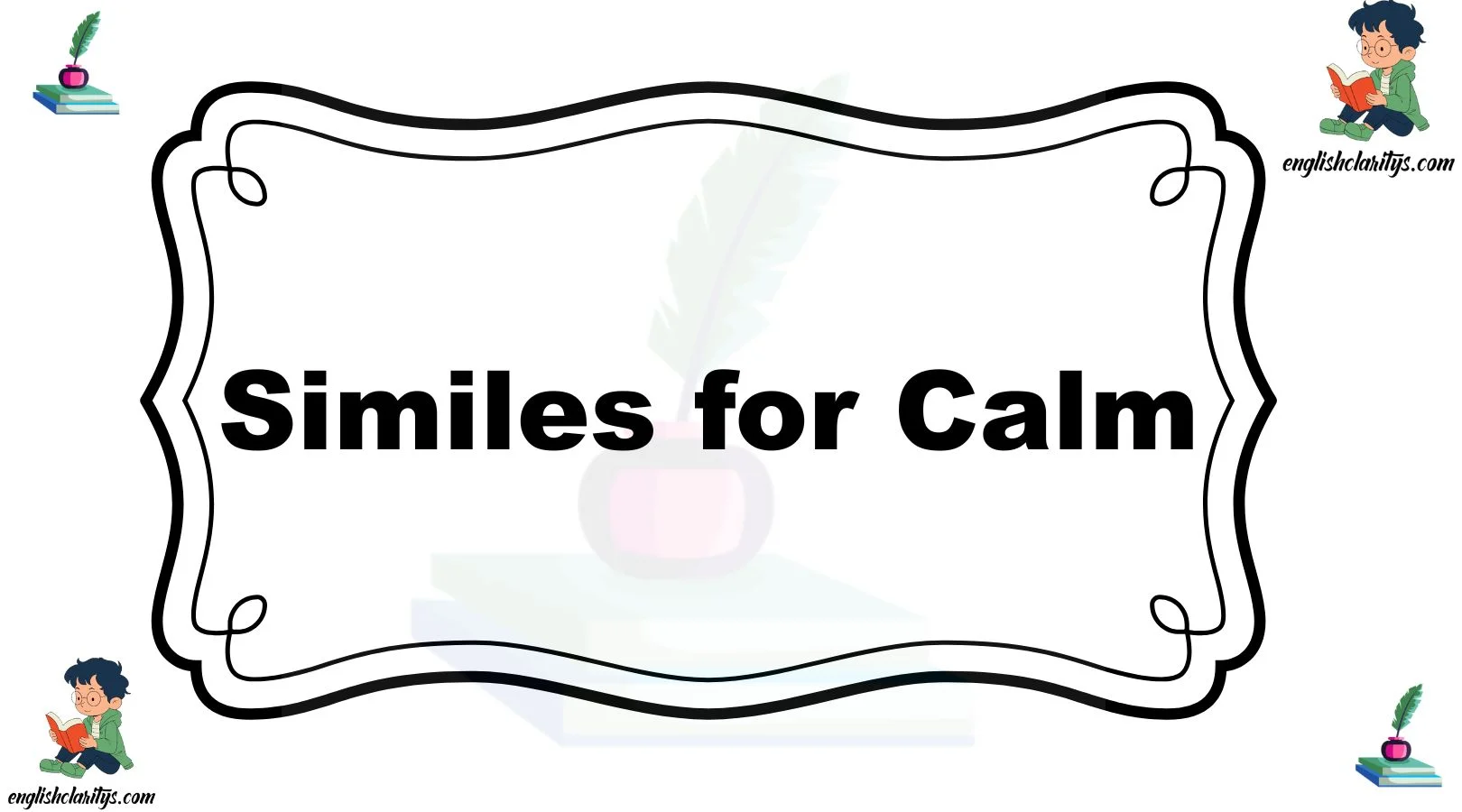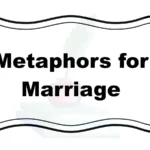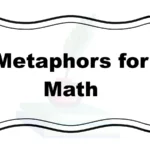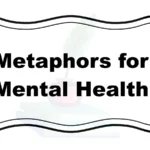In a world that often feels noisy, rushed, and emotionally overwhelming, finding the right words to express calm can bring comfort not only to others—but also to yourself. Whether you’re describing a serene setting, a composed person, or a peaceful feeling in your heart, using vivid and gentle language helps the emotion come alive. That’s where similes come in. A well-placed smile can transform a simple sentence into something soft, visual, and meaningful—turning “calm” into something you can see, hear, and feel.
From “as calm as a still lake“ to “as calm as moonlight on water,” each phrase offers a poetic doorway into tranquility. These similes help readers and listeners understand the depth of quietness you’re trying to convey. Whether you’re writing a message of comfort, crafting meditative content, or simply trying to capture a peaceful moment in words, these comparisons will bring beauty, warmth, and clarity to your expression.
What Does “Similes for Calm” Mean?
Similes for calm are gentle, descriptive comparisons that help paint a clear picture of what peacefulness feels like. Instead of simply saying someone is “calm,” a simile brings that calmness to life through relatable imagery—like comparing it to a still lake, falling snow, or a sleeping baby.
These expressions use the words “like” or “as” to connect emotions with everyday visuals and sounds. This not only adds color to your language but also makes your message more heartfelt, clear, and memorable. Whether you’re writing poetry, offering comfort, or describing a moment of quiet, similes for calm allow your words to resonate with softness and sincerity.
When to Use “Similes for Calm”
You can use similes for calm whenever you want to describe peace, serenity, or emotional stillness in a way that feels vivid and relatable. These similes are especially helpful in moments where words like “peaceful” or “quiet” just don’t feel expressive enough.
Whether you’re writing a poem, sharing a heartfelt message, crafting meditative content, or describing someone’s gentle demeanor, these comparisons help your language feel more human and emotionally true. They’re ideal for stories, reflections, affirmations, or conversations where you want your tone to be soothing, comforting, or introspective. If you’re aiming to bring stillness to life in words, that’s the perfect time to use a simile for calm.
Pros and Cons of Using Similes for Calm
Pros:
- Creates vivid imagery that touches the heart
- Softens the tone of your writing or speech
- Makes descriptions feel relatable and natural
- Encourages emotional connection with your audience
- Helps explain complex inner feelings in simple ways
Cons:
- Overuse may sound repetitive or poetic in the wrong context
- Some similes may confuse if unfamiliar to the reader
- Not always appropriate in very formal or scientific writing
- Can feel too flowery if not used sparingly
- May reduce clarity if the simile is too abstract
1. As calm as a still lake
Definition: Compares peacefulness to the undisturbed surface of a lake.
Detailed Explanation: A still lake has no ripples, noise, or rush—symbolizing deep tranquility and mental quiet.
Scenario Example: After the yoga session, her mind was as calm as a still lake.
Best Use: Ideal for describing inner peace or emotional stability.
Worst Use: Doesn’t fit energetic or chaotic contexts.
Tone: Serene, peaceful, meditative
3 Other Ways to Say It:
- As still as midnight water
- Calm like a silent pond
- Peaceful as a forest glade
2. As calm as a sleeping baby
Definition: Compares calmness to the gentle restfulness of a baby.
Detailed Explanation: Sleeping babies often radiate a natural sense of safety and softness.
Scenario Example: His voice was as calm as a sleeping baby—soft, reassuring, and pure.
Best Use: Ideal for comforting scenes or gentle emotional tones.
Worst Use: Not suitable when describing chaos or adults in distress.
Tone: Warm, soothing, nurturing
3 Other Ways to Say It:
- Peaceful as a lullaby
- Gentle like bedtime rain
- Quiet as a warm cradle
3. As calm as the morning dew
Definition: Compares stillness to the light, fresh presence of dew.
Detailed Explanation: Morning dew evokes images of untouched freshness and purity.
Scenario Example: She handled the news as calm as the morning dew, graceful and clear.
Best Use: Great for quiet confidence or emotional poise.
Worst Use: Avoid high-energy or aggressive writing.
Tone: Fresh, composed, poetic
3 Other Ways to Say It:
- Serene like sunrise
- Light like morning mist
- Fresh as dawn air
4. As calm as a deep breath
Definition: Reflects the grounding power of intentional breathing.
Detailed Explanation: Taking a deep breath often symbolizes control, stillness, and reset.
Scenario Example: Before speaking, he grew as calm as a deep breath—steady and collected.
Best Use: Excellent for emotional regulation or mindfulness themes.
Worst Use: Not ideal for moments of intense motion or tension.
Tone: Grounded, mindful, centered
3 Other Ways to Say It:
- Balanced like slow breathing
- Grounded like meditation
- Still as a pause
5. As calm as the moonlit sky
Definition: Compares tranquility to the quiet, glowing beauty of the night sky.
Detailed Explanation: A moonlit sky often brings feelings of peace, reflection, and solitude.
Scenario Example: Her presence was as calm as the moonlit sky—soft, luminous, and quiet.
Best Use: Perfect for describing emotional stillness or dreamy atmospheres.
Worst Use: Not suitable for day scenes or loud environments.
Tone: Poetic, dreamy, peaceful
3 Other Ways to Say It:
- Quiet like stars above
- Calm as a clear night
- Still like silver moonlight
6. As calm as falling snow
Definition: Compares calmness to the gentle, silent fall of snowflakes.
Detailed Explanation: Falling snow symbolizes softness, quiet, and emotional ease—ideal for painting peaceful imagery.
Scenario Example: She handled the chaos around her as calm as falling snow.
Best Use: Best in peaceful, poetic, or emotional scenes.
Worst Use: Doesn’t fit in intense or heated conversations.
Tone: Gentle, poetic, serene
3 Other Ways to Say It:
- Quiet like snowfall
- Light as snow on branches
- Peaceful like a winter hush
7. As calm as the ocean on a windless day
Definition: Compares stillness to the sea when there’s no movement.
Detailed Explanation: A windless ocean is vast, powerful, and yet deeply still—great for expressing inner strength and peace.
Scenario Example: Even during the crisis, he remained as calm as the ocean on a windless day.
Best Use: Excellent for emotionally strong, composed characters.
Worst Use: Avoid when talking about active or turbulent moments.
Tone: Majestic, grounded, peaceful
3 Other Ways to Say It:
- Smooth like glassy water
- Deep like ocean silence
- Steady as a tide at rest
8. As calm as a candle’s flame in still air
Definition: Highlights the soft glow and steadiness of a flame undisturbed by wind.
Detailed Explanation: This image symbolizes quiet energy and peaceful illumination.
Scenario Example: Her presence was as calm as a candle’s flame in still air.
Best Use: Ideal for spiritual or emotional settings.
Worst Use: Not fitting for busy or chaotic descriptions.
Tone: Spiritual, elegant, warm
3 Other Ways to Say It:
- Steady as a flame
- Gentle like soft firelight
- Glowing like a lantern at dusk
9. As calm as a meditation bell
Definition: Refers to the tranquil, lasting tone after a bell is struck in meditation.
Detailed Explanation: The sound resonates peace and clarity, symbolizing mental stillness.
Scenario Example: His words rang out as calm as a meditation bell—pure and grounded.
Best Use: Perfect for mindful, healing, or meditative themes.
Worst Use: Doesn’t suit fast-paced, loud dialogue.
Tone: Mindful, spiritual, clear
3 Other Ways to Say It:
- Clear like crystal tones
- Peaceful like temple silence
- Balanced as inner peace
10. As calm as a cat sunbathing
Definition: Compares calmness to a relaxed cat soaking in sunlight.
Detailed Explanation: Cats in sunbeams radiate contentment and physical stillness—perfect for cozy or warm feelings.
Scenario Example: She lay on the couch as calm as a cat sunbathing.
Best Use: Great for comfort scenes, home writing, or body relaxation.
Worst Use: Avoid when the moment requires alertness or action.
Tone: Cozy, warm, playful
3 Other Ways to Say It:
- Relaxed like a kitten in sun
- Still like a sleepy pet
- Content as purring warmth
11. As calm as a whisper in the dark
Definition: Describes stillness that’s soft, subtle, and emotionally deep.
Detailed Explanation: This simile creates a quiet, emotionally intimate atmosphere.
Scenario Example: Her voice came through the phone as calm as a whisper in the dark.
Best Use: Best for emotional closeness, vulnerability, or quiet confidence.
Worst Use: Not for noisy or joyful scenes.
Tone: Intimate, emotional, delicate
3 Other Ways to Say It:
- Gentle like hushed words
- Soft as nighttime breath
- Quiet like secret prayers
12. As calm as freshly fallen rain
Definition: Captures the calmness and renewal that comes with rain.
Detailed Explanation: Rain cleanses, cools, and brings calm, especially when soft and steady.
Scenario Example: His presence felt as calm as freshly fallen rain.
Best Use: Excellent for renewal, fresh starts, or emotional healing.
Worst Use: Avoid in scenes meant to convey conflict or anger.
Tone: Healing, peaceful, natural
3 Other Ways to Say It:
- Gentle like spring drizzle
- Calm like cool rain
- Cleansing as a morning shower
13. As calm as a held hand
Definition: Conveys calm through human connection and touch.
Detailed Explanation: Holding hands often brings security and comfort—perfect for relationships or emotional reassurance.
Scenario Example: In the storm of grief, her voice was as calm as a held hand.
Best Use: Best for supportive or loving scenes.
Worst Use: Doesn’t fit action or isolation themes.
Tone: Loving, steady, human
3 Other Ways to Say It:
- Steady like a friend’s grip
- Grounded like a hug
- Comforting as safe touch
14. As calm as a tree in still air
Definition: Describes strength and stillness grounded in nature.
Detailed Explanation: Trees don’t move when the air is still—symbolizing quiet strength and rootedness.
Scenario Example: He stood at the altar as calm as a tree in still air.
Best Use: Great for characters who are calm under pressure.
Worst Use: Avoid when writing characters that are nervous or fidgety.
Tone: Strong, grounded, quiet
3 Other Ways to Say It:
- Still as ancient roots
- Quiet like forest peace
- Solid like oak
15. As calm as a closed book
Definition: Compares peace to the silence of a book resting, full of untold stories.
Detailed Explanation: A closed book holds potential but no immediate action—representing a quiet pause.
Scenario Example: After her final exam, she felt as calm as a closed book.
Best Use: Ideal for endings, silence, or transitions.
Worst Use: Not useful during active, plot-heavy moments.
Tone: Final, quiet, thoughtful
3 Other Ways to Say It:
- Peaceful like a finished page
- Quiet like untouched stories
- Still like a dusty shelf
16. As calm as a cloud drifting
Definition: Compares peace to a cloud’s slow, graceful movement.
Detailed Explanation: Clouds move effortlessly—representing softness and emotional fluidity.
Scenario Example: She moved through the room as calm as a cloud drifting in the sky.
Best Use: Perfect for describing motion without urgency.
Worst Use: Doesn’t suit sharp or alert behavior.
Tone: Airy, flowing, light
3 Other Ways to Say It:
- Soft like drifting fog
- Calm like sky breeze
- Gentle like daylight float
17. As calm as a quiet heartbeat
Definition: Connects calm to the steady rhythm of life.
Detailed Explanation: A quiet heartbeat shows physical and emotional balance—symbolizing presence and health.
Scenario Example: In his arms, she felt as calm as a quiet heartbeat.
Best Use: Best in love, healing, or nurturing moments.
Worst Use: Avoid in high-adrenaline scenes.
Tone: Grounded, loving, steady
3 Other Ways to Say It:
- Rhythmic like breathing
- Steady like inner peace
- Balanced like gentle rhythm
18. As calm as early morning silence
Definition: Captures the stillness of dawn before the world wakes.
Detailed Explanation: Mornings often hold a sacred silence, perfect for reflection or stillness.
Scenario Example: Her thoughts were as calm as early morning silence.
Best Use: Perfect for mindfulness or introspection scenes.
Worst Use: Doesn’t fit chaotic, crowded settings.
Tone: Quiet, reflective, sacred
3 Other Ways to Say It:
- Silent like sunrise
- Still as the world at rest
- Peaceful like waking light
19. As calm as a held breath before a wish
Definition: Describes anticipation and inner quietness.
Detailed Explanation: This simile evokes emotional stillness just before hope or change.
Scenario Example: Before saying “I do,” he stood as calm as a held breath before a wish.
Best Use: Best for suspenseful but peaceful moments.
Worst Use: Avoid during overwhelming or aggressive scenes.
Tone: Emotional, hopeful, delicate
3 Other Ways to Say It:
- Quiet like a secret hope
- Still like a birthday wish
- Calm as silent dreams
20. As calm as a sleeping dog in sunlight
Definition: Reflects domestic peace and emotional comfort.
Detailed Explanation: Sleeping dogs radiate contentment—useful in warm, casual writing.
Scenario Example: The baby slept as calm as a sleeping dog in sunlight.
Best Use: Ideal for familial, cozy, or peaceful domestic scenes.
Worst Use: Doesn’t work for stressful or public settings.
Tone: Homey, relaxed, affectionate
3 Other Ways to Say It:
- Warm like nap time
- Still as afternoon rest
- Soft like fur in light
21. As calm as slow-moving clouds
Definition: Emphasizes continuous calm through soft movement.
Detailed Explanation: Slow clouds suggest consistency and smooth transitions.
Scenario Example: His decisions were as calm as slow-moving clouds—measured and steady.
Best Use: Good for leaders, mentors, or thoughtful moments.
Worst Use: Avoid when describing emotional spikes.
Tone: Wise, steady, patient
3 Other Ways to Say It:
- Flowing like calm skies
- Gentle as passing shade
- Peaceful like overcast light
22. As calm as moonlight on water
Definition: Reflects subtle beauty and emotional stillness.
Detailed Explanation: Moonlight shimmering on water creates soft, emotional imagery.
Scenario Example: Her gaze was as calm as moonlight on water—steady and deep.
Best Use: Excellent for romance, mystery, or poetic reflection.
Worst Use: Not for chaotic characters.
Tone: Dreamy, poetic, emotional
3 Other Ways to Say It:
- Shimmering like night peace
- Still as midnight reflections
- Quiet like silver water
23. As calm as a painter’s brush stroke
Definition: Connects creativity and calm.
Detailed Explanation: A single, smooth brushstroke symbolizes control and intention.
Scenario Example: He spoke as calm as a painter’s brush stroke—measured and smooth.
Best Use: Great in artistic, thoughtful, or slow-paced narratives.
Worst Use: Avoid when chaos or panic is involved.
Tone: Creative, precise, composed
3 Other Ways to Say It:
- Graceful like ink flow
- Smooth as blended color
- Steady like an artist’s hand
24. As calm as untouched snow
Definition: Captures the silence and purity of fresh snow.
Detailed Explanation: Untouched snow reflects perfection, stillness, and sacred quiet.
Scenario Example: Her spirit felt as calm as untouched snow—pure and soft.
Best Use: Perfect for describing innocence, clarity, or stillness.
Worst Use: Not useful in active or messy situations.
Tone: Pure, gentle, sacred
3 Other Ways to Say It:
- White like new snow
- Still like winter fields
- Quiet as frosted silence
25. As calm as dusk settling over the hills
Definition: Describes the end-of-day peace that gently arrives.
Detailed Explanation: Dusk signals closure, soft light, and relaxation—perfect for emotional transitions.
Scenario Example: Her presence was as calm as dusk settling over the hills.
Best Use: Best for endings, goodbyes, or healing moments.
Worst Use: Avoid in climactic or daytime scenes.
Tone: Reflective, peaceful, closing
3 Other Ways to Say It:
- Soft as fading light
- Gentle like twilight air
- Quiet as day’s end
Conclusion
Similes for calm open the door to deeper, more meaningful expression. Instead of simply saying someone is calm, you bring that feeling to life—through snowflakes, still lakes, moonlight, or a sleeping cat. Each simile carries a specific emotion, image, and tone, helping you speak with care, clarity, and personality. Whether you’re writing something poetic, comforting someone, or expressing stillness in your day-to-day language, these similes can help your words resonate with beauty and peace. Let your message be as calm as falling snow—and just as unforgettable.
MCQs
1. “As calm as a still lake” suggests:
A) Unpredictable behavior
B) Total silence and emotional peace
C) Loud and energetic mood
D) Aggressive reactions
Answer: B
2. “As calm as a sleeping baby” refers to:
A) Constant movement
B) Deep fear
C) Peaceful rest and innocence
D) Anger
Answer: C
3. What does “as calm as falling snow” symbolize?
A) A loud interruption
B) Emotional chaos
C) Softness and silent stillness
D) Surprise
Answer: C
4. “As calm as the ocean on a windless day” fits a character who is:
A) Nervous and shaky
B) Overactive and loud
C) Centered and emotionally strong
D) Talkative and playful
Answer: C
5. Which simile fits someone offering comfort?
A) As angry as a volcano
B) As calm as a held hand
C) As stormy as thunder
D) As restless as a squirrel
Answer: B
6. “As calm as moonlight on water” would describe someone who is:
A) Quick and loud
B) Reflective and gentle
C) Aggressive and loud
D) Distracted and panicked
Answer: B
7. “As calm as a quiet heartbeat” fits best with:
A) Calm emotional balance
B) Excitement
C) Loud physical energy
D) Discomfort
Answer: A
8. Which simile reflects peaceful creativity?
A) As calm as a painter’s brush stroke
B) As wild as fireworks
C) As loud as a crowd
D) As chaotic as a whirlwind
Answer: A
9. “As calm as early morning silence” is useful when describing:
A) A dramatic event
B) A chaotic city street
C) A peaceful, introspective person
D) A child screaming
Answer: C
10. “As calm as untouched snow” suggests:
A) Energy and speed
B) Innocence and quiet
C) Disruption
D) Constant motion
Answer: B
11. Which smile suits a thoughtful leader?
A) As calm as a closed book
B) As calm as slow-moving clouds
C) As restless as wind
D) As loud as applause
Answer: B
12. “As calm as a candle’s flame in still air” gives a sense of:
A) Chaos and fear
B) Stillness and glowing peace
C) Excitement
D) Distraction
Answer: B
13. “As calm as freshly fallen rain” is best used when expressing:
A) Destruction
B) Emotional healing
C) Excitement
D) Nervousness
Answer: B
14. “As calm as dusk settling over the hills” evokes a feeling of:
A) Panic
B) Resolution and quiet
C) Loud happiness
D) Tension
Answer: B
15. Which simile connects calmness with natural balance?
A) As calm as a tornado’s eye
B) As calm as a tree in still air
C) As loud as lightning
D) As fast as fire
Answer: B
FAQs
1. What are similes for calm, and how do they help in writing?
Similes for calm are gentle comparisons using “like” or “as” that express peace, stillness, or emotional balance. They help your writing feel more human, relatable, and vivid—especially when you’re describing moods or settings.
2. Can I use these similes in formal writing or only in creative pieces?
These similes work beautifully in creative writing, personal communication, and emotional storytelling. In formal writing, use them sparingly—only when you want to soften the tone or connect emotionally.
3. Are these similes useful for meditation or wellness content?
Yes! Many of these similes (like as calm as a deep breath) are perfect for mindfulness, yoga, and wellness topics. They resonate with readers looking for peace and emotional healing.
4. How do I know which simile fits best in a sentence?
Think about your intent, tone, and audience. Choose a simile that fits the situation emotionally and visually. If the moment is peaceful and poetic, choose something as calm as moonlight on water.
5. Is it okay to create my own similes based on this list?
Absolutely! Use this article as inspiration. The best similes are personal, creative, and emotionally true to you. Try combining feelings with nature, quiet objects, or gentle actions.




